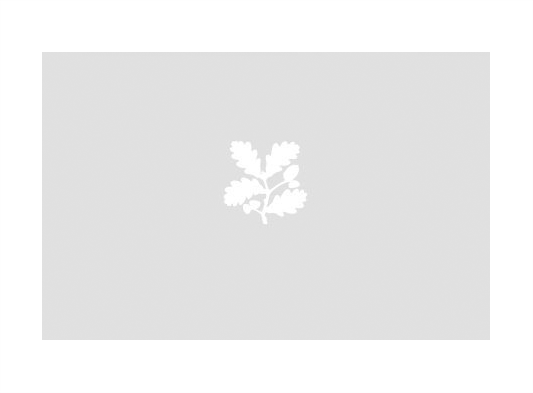Queen Caroline (of Brandenburg Ansbach) (1683–1737)
John Michael Rysbrack (Antwerp 1684 – London 1770)
Category
Art / Sculpture
Date
circa 1726
Materials
Portland stone
Collection
Stowe, Buckinghamshire
NT 91818
Summary
Portland stone sculpture, Queen Caroline (1683–1737), attributed to John Michael Rysbrack (Antwerp 1694 – London 1770), circa 1727. A full -length portrait on a substantial plinth of four fluted ionic columns.
Full description
In c1725/1726 Lord Cobham raised a statue of Caroline of Ansbach, then the Princess of Wales, at the east end of a formal canal and opposite the Rotunda with its gilded statue of the Medici Venus. In his journal, Thomas Knight refers to this as 'A Statue of the Princess on 4 Columns'. At the accession of George II, Princess Caroline became Queen Consort in 1727.This full-length portrait sculpture of Queen Caroline, the Consort of King George II (1685-1760) depicts the Queen in regal robes, the proper left arm raised. The placement of this monument opposite the gilded statue of Venus within the Rotunda and the dedication - inscribed in gilt letters on the plinth entablature - 'Honori, Laudi, Virtuti Divae Carolinae’ or To the Honour, Praise and Virtue of the Divine Caroline almost raised Caroline to one of the deities of the garden. Gilbert West (1703-1756), one of Lord Cobham’s nephews, refers to the Queen's Theatre and Her Majesty's statue erected on four columns in a topographical poem, published anonymously in 1732; 'Beyond, a sylvan Theatre displays/ Its circling Bosom to the Noon-tide Rays/ […]High on a Pedestal, whose swelling Base/To Heav'n itself aspiring Columns raise/ Shines the great Part'ner of Augustus' Bed/The guardian Goddess of the noble Shade.' In the 1760's Earl Temple (1711-1779) commissioned several alterations to the gardens. In c.1762 he had the south vista widened with the felling of the Abele (Poplar) Walk, leaving the statue of Queen Caroline and her Pillar without a woody backdrop and with the rear of the statue visible from the South Front steps. Both statue and pillar were relocated to their current position near to the western end of the Eleven Acre Lake - on a mount covering an ice-house and replacing the Gibbs building - at the edge of the Labyrinth. This evergreen wilderness and woodland with its network of mazy paths formed the new backdrop to the statue. In 1771, Lapatie wrote; ‘Let us enter the labyrinth […] and follow its windings. […] This alley leads you to a hillock planted with cypress and on it stands the Monument to Queen Caroline […]'. In this new location, the statue of Queen Caroline still faced the Rotunda with its gilded statue of the Medici Venus, therefore the axial relationship was preserved between the Queen and the Goddess.
Provenance
Produced for Viscount Cobham (1675-1749), attributed to sculptor John Michael Rysbrack (1694-1770). Relocated to the Western Garden in c. 1754 by Earl Temple (1711-1779). Listed for sale but not sold in: ‘The Ducal Estate of Stowe, near Buckingham […]’, 1921, the Eighteenth Day’s Sale, lot 3816, p. 227: ‘The statue of Queen Caroline […]'.Also unsold in ‘The Ducal Estate of Stowe, near Buckingham […]’, 1922, the Second Day’s Sale, lot 99, page 15: ‘The statue of Queen Caroline'.One of the garden monuments transferred to the National Trust along with the gardens in 1989 by Stowe School.
Makers and roles
John Michael Rysbrack (Antwerp 1684 – London 1770), sculptor
References
Clarke 1990: George B. Clarke, Descriptions of Lord Cobham’s Gardens at Stowe (1700-1750), no. 26. Buckinghamshire Record Society, Dorchester 1990, p.23 West 1732: Gilbert West. Stowe: the gardens of the Right Honourable Richard Lord Viscount Cobham. Address’d to Mr. Pope. London: Printed for L. Gilliver at Homer’s Head in Fleet-Street, London 1732, pp.46-7 Seeley, B, Stowe: a description of the magnificent house and gardens of the Right Honourable George Grenville Nugent Temple, Earl Temple, Viscount and Baron Cobham, M.DCC.LXXXIII. 1783
